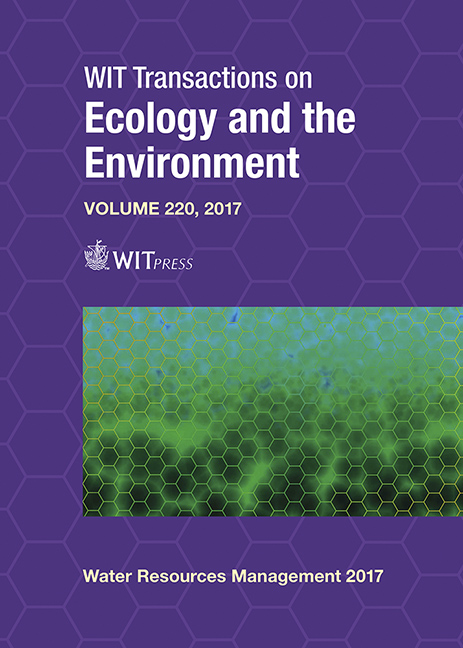THE RELATIONSHIPS BETWEEN DROUGHT INDICES (SPI, API) AND IN-SITU SOIL MOISTURE IN FORESTED HILLSLOPES
Price
Free (open access)
Transaction
Volume
220
Pages
8
Page Range
217 - 224
Published
2017
Size
489 kb
Paper DOI
10.2495/WRM170211
Copyright
WIT Press
Author(s)
YONG-SEOK GWAK, YUN-TAE KIM, CHANG-HEE WON, SOO-HYUN KIM
Abstract
Soil moisture is a critical variable in agriculture and is closely associated with meteorological drought. It is an important issue to estimate and characterize the variation of the soil moisture using the drought indices. In this study, the variation is examined to figure out the relationship between meteorological drought indices and the soil moisture monitored in the soil depths 10cm, 30cm and 60cm at forested hillslopes for 3 years (2009–2011). For the drought indices, a standard precipitation index (SPI), with time scales of 1, 2, 3, 6 and 12 months, and an antecedent precipitation index (API) are used. As a result, the optimum time scale of SPI to the soil moisture is from 1 to 2 months, but it depends on the soil layers. The correlation coefficient of SPI in summer is higher than that in spring and fall. The SPI is not a good measure of the soil moisture; it is better to use API with the exponential reduction function at all soil layers. Particularly, API with consideration to the seasonal patterns of parameter (SAPI) could well delineate the variations of the soil moisture at all soil layers (r=0.80), better than API with a fixed parameter (r=0.70). The seasonal variation of the API’s parameter at soil layers could be associated with the evapotranspiration (PET) and the soil hydrological properties such as soil transmissivity. The seasonal characteristics of the soil moisture along with soil layers in this study should be considered to indicate and manifest the soil moisture using the drought indices.
Keywords
soil moisture, drought indices, standard precipitation index (SPI), antecedent precipitation index (API), time scale, correlation coefficient





